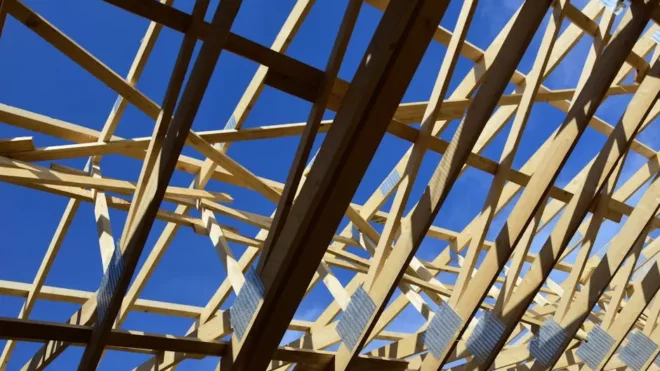In recent years, eco-friendly roofing options have gained popularity as homeowners and builders look for sustainable materials. But what are these materials, and how do they contribute to a more environmentally responsible construction? In this article, we’ll explore some of the most common eco-friendly roofing materials and their benefits.
1. Understanding Eco-Friendly Roofing
Eco-friendly roofing refers to materials and practices that minimize environmental impact while providing durability and aesthetic appeal. The concept goes beyond just using renewable resources; it incorporates energy efficiency and longevity into building systems. By selecting eco-friendly options, homeowners contribute to preserving natural resources while enhancing their property’s value.
Understanding eco-friendly roofing also involves recognizing the health benefits for inhabitants. Many traditional roofing materials contribute to harmful emissions and poor air quality when improperly disposed of. In contrast, eco-friendly materials often prioritize sustainability and health, reducing the release of volatile organic compounds (VOCs) into the environment.
Furthermore, eco-friendly roofing systems typically promote energy efficiency. By reflecting sunlight and maintaining cooler temperatures, these materials help reduce the strain on air conditioning systems, ultimately leading to lower utility bills. Investing in such roofing solutions not only benefits the homeowner but also plays a role in combating climate change.
2. Common Eco-Friendly Roofing Materials
Several materials stand out when it comes to eco-friendly roofing options. One of the most popular choices is metal roofing, primarily galvanized steel or aluminum. These materials are recyclable and boast long lifespans, making them a wise investment from both an economical and environmental standpoint.
Another option is clay or concrete tiles, which are known for their durability and thermal mass. They are made from natural materials and are highly energy-efficient, as they can reflect heat away from the home during summer. Additionally, they can last up to 50 years with minimal maintenance, providing lasting value.
Living roofs, or green roofs, are gaining traction as one of the most innovative eco-friendly options. These systems involve planting vegetation directly on the roofing membrane, providing insulation, improving air quality, and aiding in rainwater absorption. Not only do they have a unique aesthetic appeal, but they also contribute to local biodiversity.
Wood shingles made from sustainably harvested trees or recycled materials are also worth mentioning. They offer natural insulation and are biodegradable, merging aesthetics with environmental responsibility. However, proper maintenance is required to keep them effective and to prolong their life.
3. Benefits of Using Eco-Friendly Materials
Using eco-friendly roofing materials comes with numerous advantages. One significant benefit is the increase in energy efficiency, which directly translates to reduced utility bills. Materials like reflective shingles or metal panels can keep homes cooler, lowering the demand for air conditioning during hot months.
Additionally, eco-friendly roofs often come with longer lifespans compared to traditional materials. This longevity reduces the frequency of roof replacements, which can be disruptive and costly. With lower maintenance needs and fewer replacements, homeowners save both time and money in the long run.
Environmental impact is another critical factor. By choosing sustainable materials, homeowners significantly reduce their carbon footprint, which is vital in addressing global warming. Components that are recyclable or made from recycled materials contribute to a more circular economy, reducing waste in landfills.
Lastly, homes with eco-friendly roofing often have higher resale values. As more buyers prioritize sustainability, homes featuring eco-friendly materials can be a major selling point. Investors are increasingly aware that energy-efficient homes offer lower operation costs, making them attractive purchases.
4. How to Choose the Right Material for Your Roof
Choosing the right eco-friendly roofing material requires careful consideration of several factors, including climate, budget, and aesthetic preferences. Different materials perform better in certain environments, so it’s essential to assess local weather conditions before making a choice.
Budget considerations remain paramount. While eco-friendly roofing options can sometimes have a higher upfront cost, their energy efficiency and longevity often result in savings over time. Homeowners should weigh initial investment versus long-term savings for an informed decision.
Aesthetics should also not be overlooked. With advancements in eco-friendly materials, there are now many visually appealing options available. Homeowners should select a material that complements the architectural style of their home while still meeting the sustainable criteria they desire.
Lastly, consulting professionals is crucial in the decision-making process. Experienced roofers can provide insights and recommendations based on their knowledge of local conditions and the latest eco-friendly materials on the market. Doing thorough research and seeking expert advice can ensure you make a satisfying choice.
Wrapping Up the Benefits of Eco-Friendly Roofing
Choosing eco-friendly roofing options not only helps the environment but can also improve energy efficiency and reduce long-term maintenance costs. By understanding the materials available, you can make an informed decision that benefits both your home and the planet.




